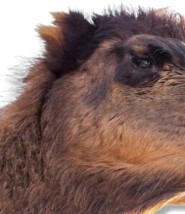 |  |
 | Camels are mammals with long legs, big-lipped snouts and a humped back. There are three types: Dromedary camels, with one hump, and two types of Bactrian camels, with two humps. |
|
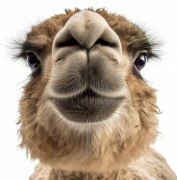 Camels' humps consist of stored fat, which they can metabolize when food and water is scarce. The camel's hump fat releases water into its body.
In addition to their humps, camels have other ways to adapt to their environment.
Camels' humps consist of stored fat, which they can metabolize when food and water is scarce. The camel's hump fat releases water into its body.
In addition to their humps, camels have other ways to adapt to their environment. They have a third, clear eyelid that protects their eyes from blowing sand. Two rows of long lashes also protect their eyes. They can shut their nostrils during sand storms! The widening toes on a camel's hoof can provide extra grip for varying soil and sand conditions. Humans have used camels as transport for passengers and cargo, for thousands of years. A camel can carry about 170 to 270 kilograms on their backs. Domestic camels are often also the main source of meat, milk and even leather or wool products. Females bear a single calf after a gestation of around 12 - 15 months. A mother can even stop mid-labour and hold onto her baby for weeks if she feels it isn't the right time.   Camels eat a variety of things; their thick lips allow them to eat foods that most other animals couldn't, such as thorny plants. Camels are herbivores, so they don't eat meat. Filling up on water when it's available is very important, as there isn't much water and often very little rainfall where they live. They can drink 113 litres of water in just 13 minutes. Their bodies rehydrate faster than any other mammal. Here are the three types of camels: 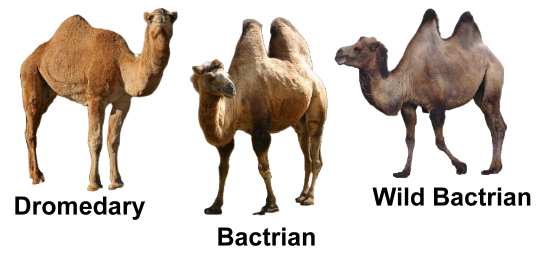 The Dromedary [Camelus dromedarius] Learn about classifications here 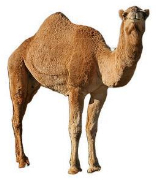 The dromedary, also known as the Arabian camel, or one-humped camel, is a large camel of the genus Camelus, with one hump on its back. It is the tallest of the three species of camel; adult males can stand up to 2.4 metres at the shoulder. The one-humped dromedary makes up 94% of the world's camel population. The dromedary, also known as the Arabian camel, or one-humped camel, is a large camel of the genus Camelus, with one hump on its back. It is the tallest of the three species of camel; adult males can stand up to 2.4 metres at the shoulder. The one-humped dromedary makes up 94% of the world's camel population.This species' distinctive features include its long, curved neck, narrow chest, a single hump, and long hairs on the throat, shoulders and hump. Dromedaries are mainly active during daylight. They form herds of about 20 individuals, which are led by a dominant male. They feed on foliage and desert vegetation; several adaptations, such as the ability to lose more than 30% of its total water content, allow it to thrive in its desert habitat. The Bactrian [Camelus bactrianus] 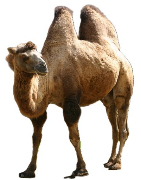 The slightly larger Bactrian camel, also known as the Mongolian camel, domestic Bactrian camel or two-humped camel, is a large camel native to the steppes of Central Asia. It has two humps on its back, in contrast to the single-humped dromedary. Its population of 2 million exists mainly as domesticated animals; as livestock, they provide food (milk and meat) and textiles (fiber and felt from the hair). The bactrian camel makes up just 6% of the world's camel population. The name comes from the ancient historical region of Bactria, in what is now Iran.
The slightly larger Bactrian camel, also known as the Mongolian camel, domestic Bactrian camel or two-humped camel, is a large camel native to the steppes of Central Asia. It has two humps on its back, in contrast to the single-humped dromedary. Its population of 2 million exists mainly as domesticated animals; as livestock, they provide food (milk and meat) and textiles (fiber and felt from the hair). The bactrian camel makes up just 6% of the world's camel population. The name comes from the ancient historical region of Bactria, in what is now Iran.
The Wild Bactrian [Camelus ferus] 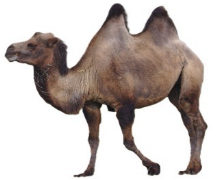 The wild Bactrian camel is an endangered species of camel living in Northwest China and southwestern Mongolia. This camel is a distinct species (not an ancestor to the domestic Bactrian camel), and is now critically endangered, with fewer than 1,000 individuals living in various protected regions.
The wild Bactrian camel is an endangered species of camel living in Northwest China and southwestern Mongolia. This camel is a distinct species (not an ancestor to the domestic Bactrian camel), and is now critically endangered, with fewer than 1,000 individuals living in various protected regions.Wild bactrian camels have long, narrow slit-like nostrils, a double row of long thick eyelashes, and ears with hairs that provide protection against desert sandstorms. They have tough undivided soles with two large toes that spread wide apart, and a horny layer which enables them to walk on rough and hot stony or sandy terrain. Camels are iconic for many reasons, including their ability to survive in the desert and their role in history. Camels are well-adapted to the desert and can survive for long periods without food or water. They have wide feet that prevent them from sinking in sand, and their humps store fat that provides energy. Camels can also withstand extreme temperature changes, sleeping standing up to stay safe from predators. 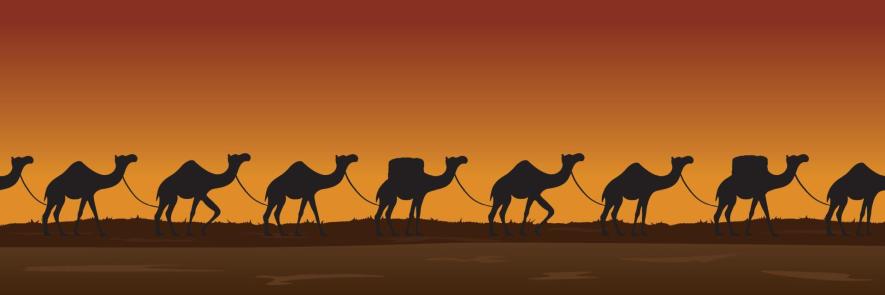 |